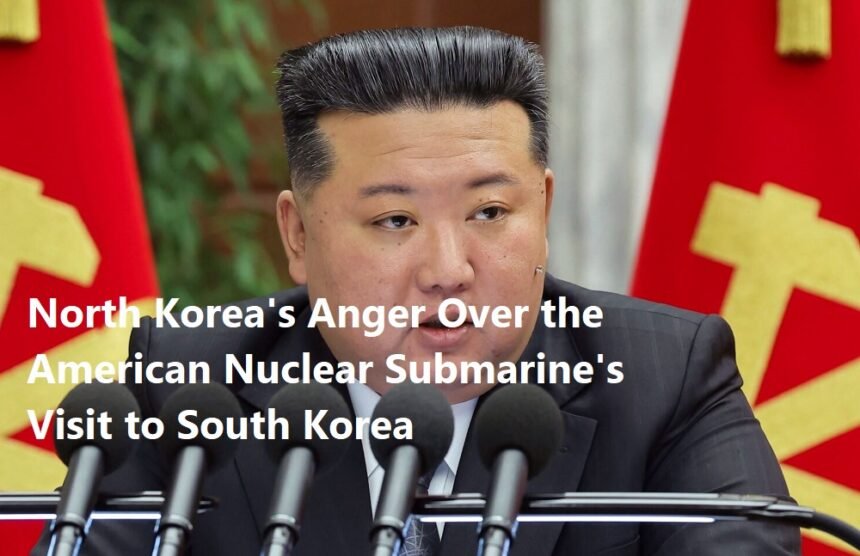The geopolitical landscape of East Asia continues to be fraught with tension, particularly in relation to North Korea’s stance towards the United States and its allies. Recently, the arrival of a United States nuclear submarine in South Korea has ignited significant outrage from the North Korean government. This incident highlights the ongoing complexities in the region and the potential for escalated conflict.
The U.S. Navy’s deployment of nuclear submarines to South Korea is often framed as a necessary measure for deterrence against North Korean provocations. However, Pyongyang perceives such actions as direct threats to its sovereignty and national security. The North Korean leadership, historically sensitive to U.S. military presence in its vicinity, has characterized the submarine’s arrival as a provocative act that undermines peace and stability in the region.
In a statement issued by North Korea’s Foreign Ministry, officials condemned the docking of the submarine, describing it as a demonstration of military aggression. The ministry emphasized that such actions would not go unchallenged and warned of “unforeseen consequences” if tensions continue to escalate. This rhetoric is consistent with North Korea’s longstanding policy of responding vehemently to perceived provocations, thereby perpetuating a cycle of hostility and mistrust.
The strategic implications of the submarine’s visit are profound. The presence of nuclear-capable vessels near the Korean Peninsula enhances the U.S. military’s capability to project power in the region, which may be interpreted by North Korea as an encroachment on its military sovereignty. Pyongyang views its nuclear arsenal as a crucial deterrent against what it perceives as hostile actions by the United States and South Korea—a sentiment echoed in various North Korean propaganda outlets that emphasize the importance of maintaining a robust defense capability.
Moreover, the incident reflects broader tensions that have plagued U.S.-North Korea relations for decades. Diplomatic efforts to denuclearize the Korean Peninsula have repeatedly stalled, with setbacks often exacerbated by military demonstrations from either side. The recent deployment of the nuclear submarine only serves to reinforce North Korea’s conviction that its nuclear program is a vital necessity for survival in an increasingly hostile environment.
It is crucial to recognize the impact of such military maneuvers on regional stability. The likelihood of miscalculation increases as military presence escalates. Both the United States and North Korea must acknowledge the potential repercussions of their actions, particularly in a landscape where misunderstandings can lead to direct confrontations. Diplomatic dialogue, albeit fraught with difficulties, remains a more viable path towards lasting peace than military posturing.
Consequently, the South Korean government finds itself in a challenging position, caught between its alliance with the United States and its responsibility to maintain peace on the peninsula. Seoul must navigate the delicate balance between reassuring its ally and containing the inevitable backlash from the North, which has demonstrated a propensity for unpredictable behavior in response to perceived threats.
In conclusion, the anger expressed by North Korea over the docking of an American nuclear submarine in South Korea underscores the persistent tensions that characterize the region. While the United States sees this as a strategic necessity, North Korea interprets it as a threat to its existence, perpetuating a cycle of provocations and hostile rhetoric. The international community must remain vigilant, advocating for diplomatic solutions to mitigate the risks associated with military escalation and to work towards a sustainable peace on the Korean Peninsula. As history has shown, the stakes are high, and the consequences of miscalculation could be dire.













